蓄电池智能检测系统设计(附程序,电路图,protetus仿真)(任务书,开题报告,外文翻译,中期检查表,论文说明书8600字)
摘 要
随着科学技术的快速发展,社会生活越来越先进,各种智能设备越来越多,本文内容是关于蓄电池的电压检测装置,用STC89C52单片机为核心,通过ADC0832将模拟电压转化为数字量,然后通过数码管显示出来。
本文先对各个子模块进行了讲解,分析了他们各自的功能,以及他们的实现原理,然后通过STC89C52单片机将他们集合到一起,通过编写代码使他们联系起来,共同实现对蓄电池的电压测量。
关键字:STC89C52;模式转换器;蓄电池;数码管
基本内容
本文所设计的蓄电池检测系统是以STC89C52单片机为控制芯片的,然后再加上外围模块,其中包括了电源供电模块、单片机模块、数码管显示模块、按键模块、蜂鸣器模块。通过这些模块的系统的组合可实现对蓄电池的电量的测量,通过模数转化器传感器可以测量出当前的电压值,
本论文可以分为以下部分:
绪论:介绍蓄电池自动检测系统的研究背景和研究意义。
硬件设计与分析:介绍各个模块的功能,及其实现功能。
软件设计与分析:介绍使用的软件和软件设计方案。
总结:对本次设计的感受和不足进行总结。
实现的基本功能
数码管显示:单片机将当前环境的状态通过数码管显示屏来显示,包括当前的电压值。
模数转化模块,本文用ADC0832来进行转化的测定,通过模块测出的电压值与设定的值进行大小比较。
蜂鸣器模块: 当电压低于我预先设定值的时候,蜂鸣器就会发出报警声。
Automatic detection system for storage battery
Abstract
With the development of science and technology, science and technology advances, more and more advanced social life, a variety of intelligent devices, more and more of this article do is battery voltage detection device, the paper STC89C52 microcontroller core, through ADC0832 analog voltage converted to digital, and then displayed by digital tube.
In this paper, the various sub-modules were the first to explain, analyze their respective functions, and their realization of the principle, and then by the microcontroller STC89C52 them together and to write code to link them together to achieve the battery voltage measurement.
Keywords: STC89C52; battery; digit
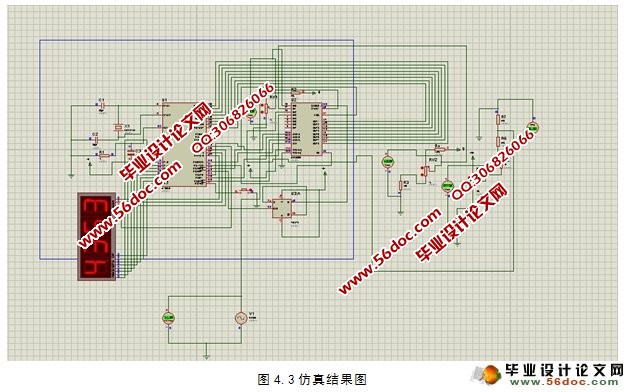
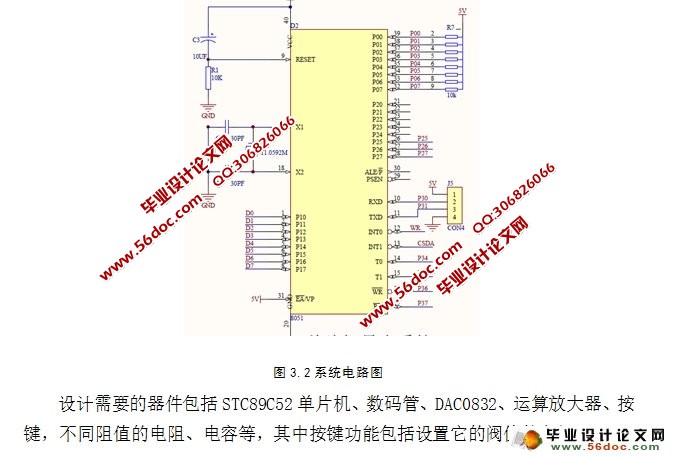
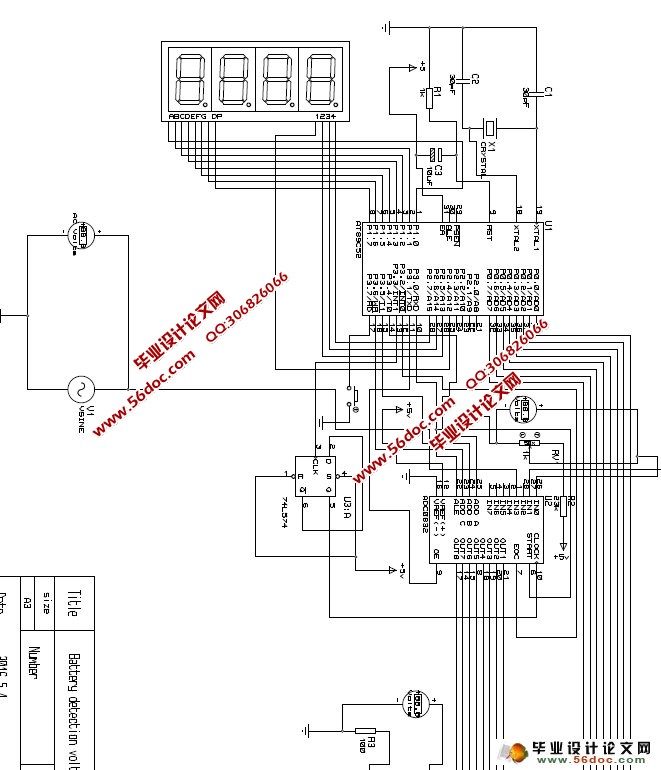
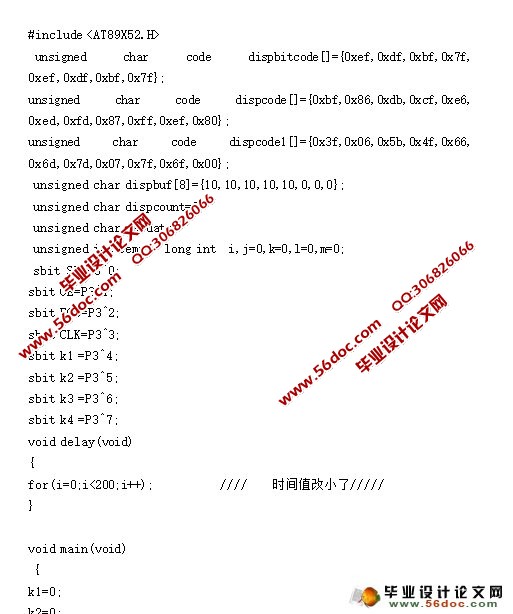
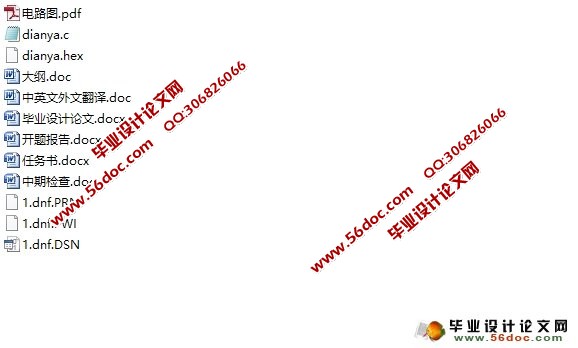
目录
蓄电池智能检测系统设计 III
摘 要 III
Abstract IV
第1章 绪 论 1
1.1系统设计的背景 1
1.2基本内容 1
1.3实现的基本功能 1
第2章 蓄电池的介绍 3
2.1 蓄电池的主要性能指标 3
2.2蓄电池的检测 3
2.3 本系统控制算法的确定 4
第3章 硬件实现及单元电路设计 5
3.1单片机的电源模块 5
3.2 主控制模块 5
3.2 STC89C52简介 6
3.2.1 STC89C52的基本结构 6
3.2.2 STC89C52的主要特点 6
3.3 ADC0832模块 6
3.4 显示模块的设计 8
3.5 时钟电路的设计 10
3.6 复位电路的设计 11
第4章 软件选择 12
4.1 软件设计应用环境 12
第5章 软件设计 13
5.1仿真软件介绍 13
5.2仿真结果 14
5.3 实验注意事项 14
5.4 软件调试 15
附 录 16
参考文献 28
|











